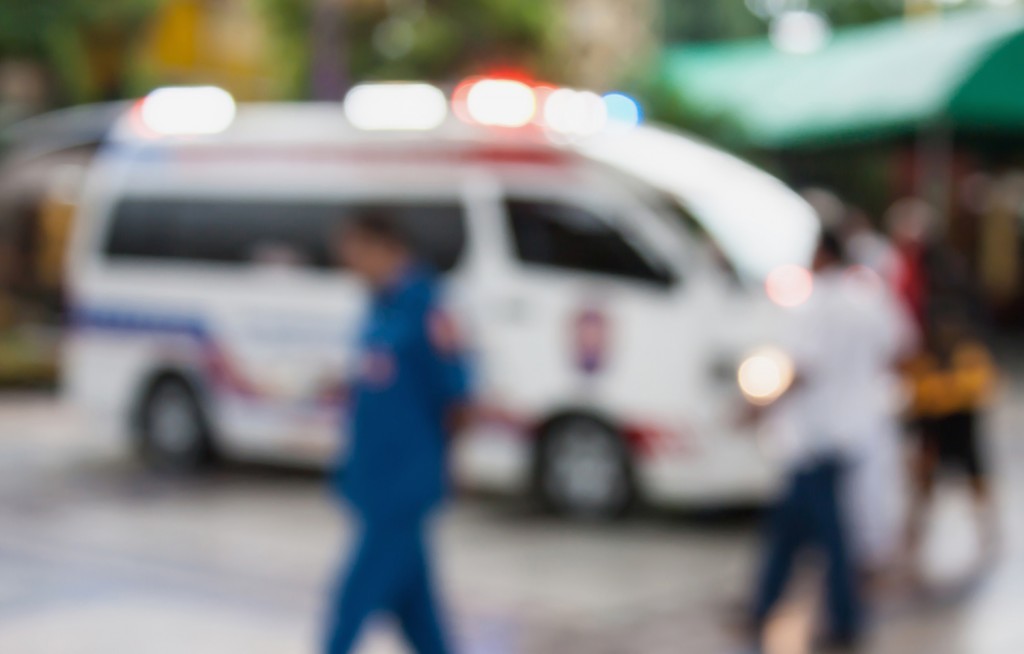by Whitney Stohr

Do you remember way back in grade school when your class visited the local fire department and were given “the talk”?
No, not that talk.
The talk about how important it is for families to prepare for house fires and other disasters. The talk about safe routes out of the house, evacuation, designating a meeting location, and, also, the importance of actually practicing as a family your retreat from your burning home.
As a practical matter, it makes a lot of sense. Planning for emergencies and identifying the best routes for escape ensures that every family member knows what to do in case of a real-life emergency. But, still, the question I have is this: Did anyone go home and create that type of plan as a family? And, for those who did, did your family actually practice it?
My family didn’t.
Our emergency “evacuation plan,” if you can even call it that, was: “Get out of the house. Fast.”
Simple enough, right? Maybe. As long as no one in the family has a disability that limits mobility or requires medical equipment or special medications of any kind.
My understanding of emergency response and response planning changed completely when I brought my son home from the hospital with a trach and ventilator, emergency equipment, monitors and an oxygen tank. All of a sudden, having emergency plans became central to our daily lives. I became the queen of contingency planning, and I wore my crown proudly.
And yet, when we moved into the fourth-floor unit of an apartment building, we failed to set aside time to solidify and, more importantly, practice what would be our evacuation plan in case of emergency.
Our emergency “evacuation plan,” if you can even call it that, was: “Get out of the house. Fast.”
It was on my to-do list. It really was. A few times each week, I would be reminded with glimpses of those bright red, industrial fire lights they install in the corner of every room in modern apartment buildings. But as a family with pressing medical concerns, all those seemingly “non-urgent” preparation tasks get pushed farther and farther down the to-do list. There are always other things that need to be done first. Until the day those lights go off, that is.
Because that’s what happened. And it was exactly the chaotic, unpracticed scramble you would assume.
Fortunately, due to my son’s medical condition, we always have an emergency go-bag ready by the door. Between myself and his nurse, we managed to throw everything we needed in the stroller and haul him down eight flights of stairs, through a basement corridor, a parking garage and out into the cold rain. (Because, of course, it was raining!)
Thankfully, I had someone else there with me at the time. And, thankfully, though my irritation was evident when we made it around the building and into the front lobby, the whole show was the result of a test alarm.
Call it our “trial run.”
There’s no doubt this was a learning experience, and we are better prepared as a family to evacuate in case of an actual emergency. We have a plan in place for different scenarios: When there is a nurse present. When I am alone. When it is impossible to leave our unit, or the exit route is blocked.
If I need to evacuate without anyone else to help, I now know exactly what to take and how much I can carry with me, while still holding my son.
Our local fire department has my son’s medical information on file, and our building supervisors know that we will need immediate assistance in the case of a fire or other disaster. They know who to call and how to best assist our family.
I guess those first responders finally won me over as I am now a firm believer in the type of evacuation planning and practice they suggested on that field trip all those years ago. It only took several decades for me to come around! So, perhaps, the moral of this story is: Don’t be like me.
Does your family have an emergency evacuation plan?
Do you have a go-bag? Does it include extra medical supplies and medications?
And, lastly, have you practiced your plan?
If you haven’t, do it soon. Put it on your calendar right this minute. A true emergency is not the time for trial runs.
 About Whitney Stohr
About Whitney Stohr
I am a mom and medical caregiver to my two-year-old son Malachi, who was born with Spina Bifida and congenital heart defects. We currently live in south King County. Follow Malachi’s journey on Instagram at @rollin.w.spinabifida.
Learn More
Families of children with disabilities and other complex medical needs can find information about emergency preparedness at the Seattle Children’s Center for Children with Special Needs.





